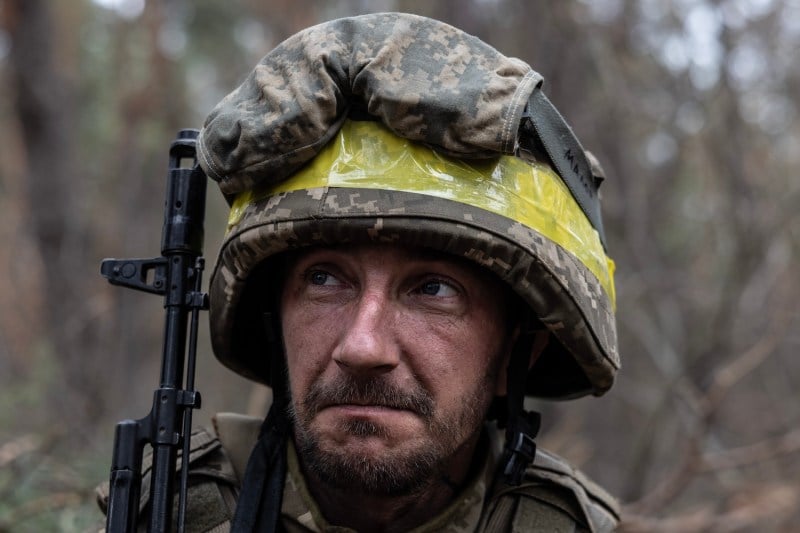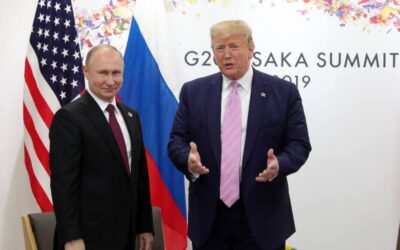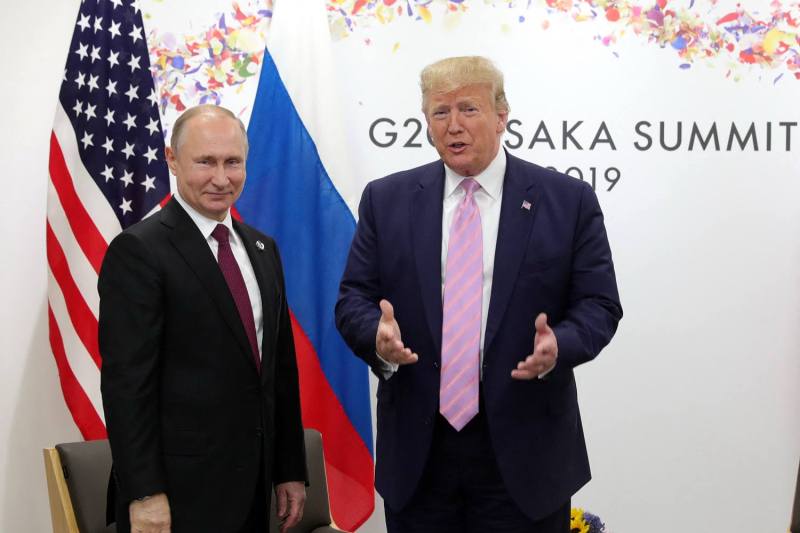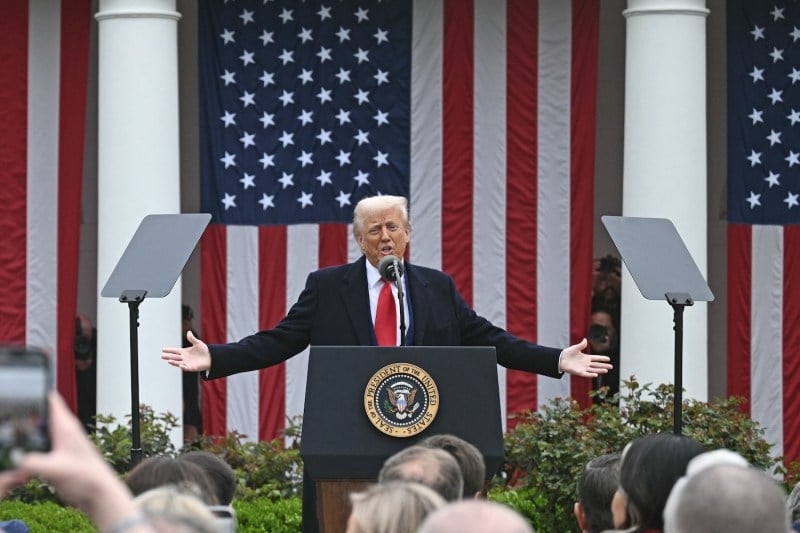What Washington Keeps Getting Wrong in War Planning

What Washington Keeps Getting Wrong in War Planning
Misjudging an adversary’s will to fight has been a major contributor to military failures since World War II.
A soldier with the 33rd Separate Mechanized Brigade in Dnipropetrovsk, Ukraine, on March 13. Paula Bronstein/Getty Images
As the world observed Russia preparing to invade Ukraine in early 2022, the most common prediction across the U.S. national security community was that the Russian military would overwhelm the Ukrainian defenders in short order. Russia’s 900,000 active-duty personnel, 2 million reserve forces, and $45 billion defense budget dwarfed that of Ukraine, which had an estimated 196,000 active-duty troops, 900,000 reservists, and defense spending one-10th that of Russia at the time of the invasion. By one account, Gen. Mark Milley, then-chairman of the Joint Chiefs of Staff, privately predicted to members of Congress that Ukraine would “fall in 72 hours.” It appeared likely that the world would witness the first conquest of a European nation since the end of World War II over 75 years ago.
Moscow’s mis-assessment has cost Russia billions of dollars, resulted in hundreds of thousands of Russian causalities, and cratered parts of the Russian economy. Putin might not have attacked if he had accurately anticipated the significant struggle that would ensue. But the West’s miscalculation almost certainly delayed critical military assistance and reduced the potential for NATO member states to do more to strengthen Ukraine’s defense at the outset.
As the world observed Russia preparing to invade Ukraine in early 2022, the most common prediction across the U.S. national security community was that the Russian military would overwhelm the Ukrainian defenders in short order. Russia’s 900,000 active-duty personnel, 2 million reserve forces, and $45 billion defense budget dwarfed that of Ukraine, which had an estimated 196,000 active-duty troops, 900,000 reservists, and defense spending one-10th that of Russia at the time of the invasion. By one account, Gen. Mark Milley, then-chairman of the Joint Chiefs of Staff, privately predicted to members of Congress that Ukraine would “fall in 72 hours.” It appeared likely that the world would witness the first conquest of a European nation since the end of World War II over 75 years ago.
Moscow’s mis-assessment has cost Russia billions of dollars, resulted in hundreds of thousands of Russian causalities, and cratered parts of the Russian economy. Putin might not have attacked if he had accurately anticipated the significant struggle that would ensue. But the West’s miscalculation almost certainly delayed critical military assistance and reduced the potential for NATO member states to do more to strengthen Ukraine’s defense at the outset.
One single factor was overlooked in Western and Russian assessments, and it’s confounded the outcome of American military conflicts for a long time. A review of U.S. wars and major combat engagements since World War II—from Vietnam to the global war on terror—strongly suggests that misjudging an adversary’s will to fight has been a major contributor in the failure of those efforts to achieve American military and political objectives. Despite its intangibility, an assessment of an adversary’s will to fight must play a greater role in American national security planning and decision-making. This is especially true regarding potential military conflict over Taiwan, where the will to fight of both China and Taiwan could play crucial roles in determining the outcome of any Chinese military effort to alter Taiwan’s current status.
In Korea, the United States misjudged Chinese willingness to join the conflict as Gen. Douglas MacArthur approached the Yalu River in October 1950. Almost three years of bloody war followed. The administration of President Lyndon Johnson dramatically escalated the American military effort in Vietnam in 1965, thinking the United States could defeat North Vietnam’s “peasant army,” despite watching a French campaign struggle for nearly a decade. This was the first of many errors in assessing North Vietnamese willingness to fight, across multiple administrations, until the North Vietnamese victory in 1975. In Kosovo in 1999, NATO military planners expected a few days of bombing would teach Yugoslav President Slobodan Milosevic a lesson. But when the Serbs dramatically escalated their forced expulsion of Kosovar Albanians, NATO found itself committed to an unexpected air campaign with no clear path to resolution. Seventy-eight days later, the Western alliance eked out a victory.
More recently, the dramatic failure of the 20-year American state-building effort in Afghanistan demonstrated how badly the United States had misjudged the Taliban’s potential to recover and resume attacks. The stunning collapse of the U.S.-supported Afghan military also revealed how badly American officials had overestimated the success of their effort in creating a capable and resolved Afghan national government, military, and police force. According to well-known datasets like the Correlates of War Project, these four conflicts alone account for over 95 percent of total U.S. casualties in the post-WWII era.
In all of these cases, policymakers attempted to assess the will to fight of friends and foes, but either gravely underestimated an enemy’s resolve (in the case of Vietnam) or overestimated a partner’s willingness to fight (Afghanistan). Then-Director of National Intelligence Avril Haines acknowledged as much in testimony to the Senate Armed Services Committee in May 2022 when she noted that forecasting will and capacity is “quite challenging to provide effective analysis on.” In the eyes of one Ukrainian journalist, “Kyiv’s determination to keep fighting…may seem irrational,” but many of her countrywomen and countrymen believe “no deal is better than a bad deal.
The United States is by no means the only nation to misdiagnose resolve. From Japan’s underestimation of Chinese resistance in the second Sino-Japanese War to Saddam Hussein’s miscalculation in the invasion of Iran in 1980 to the Soviet Union’s ill-fated efforts in Afghanistan, many countries have underappreciated an adversary’s will to fight. Shortly before attacking Pearl Harbor in 1941, the Japanese military admitted that it was “well-nigh impossible to expect the surrender of the United States.” These senior officers then dodged the question of American resolve entirely, by optimistically noting “we cannot exclude the possibility … of a great change in American public opinion” that would lead to the United States’ surrender. Four and a half years later, Japan was a grievously wounded and defeated nation.
The observation that a nation’s will to fight—its resolve—can be a critical determinant of military outcomes is not a novel observation. Prussian general and military strategist Carl von Clausewitz noted in his seminal work On War that an enemy’s power of resistance was a combination of “the total means at his disposal and the strength of his will.” Gideon Rose, in his book How Wars End, writes that Johnson’s Vietnam strategy of bombing, fighting, and nation-building “would supposedly convince the North to call off the war, permitting the United States to go home.” That strategy’s success relied heavily on a confidence that the United States could break the North Vietnamese will that proved to be unfounded.
Part of the problem may be bureaucratic. Organizational bias leads to a preference for tangible metrics—such as force size and composition or stocks of military weapons and equipment—that are easily measured in estimating likely outcomes. Far too often, assessments of the likely outcome of a conflict focus on the physical military capabilities. It is much easier to gauge these, and they are the natural and understandable primary targets of intelligence efforts. With intelligence assessments of a nation’s willingness to accept the costs of conflict, there is never tangible, concrete evidence of accuracy.
There is a certain logic to the fact that the United States’ setbacks and defeats would be tied to miscalculations of others’ willingness to fight. As the dominant military power of the globe, and a nation with the geostrategic security that allows Washington to choose its conflicts, American presidents are likely to select engagements in which the United States has a military advantage. It makes sense that the United States’ setbacks, costly draws, and defeats—in Korea, in Vietnam, in Afghanistan—would occur due to miscalculations of resolve and not a misestimation of the military balance. Decision-makers must keep this fact in mind when predicting outcomes and considering military commitments, and must be ruthlessly self-critical of their assumptions and theories.
Now, though, faced with a potential conflict with China and threats across the international system, the United States is again at risk of misestimating adversaries’ willingness to fight—with potentially catastrophic consequences.
Recent remarks from Adm. Sam Paparo, the commander of U.S. forces in the Indo-Pacific, suggest that China’s ongoing activities around Taiwan are not “exercises” but “rehearsals” for forced reunification. Hypothetical scenarios of a possible conflict between the United States and the China over the future of Taiwan tend to assume that Taiwan will put up a staunch defense—how could it not, given the investment made by Washington and strong sense of national identity? But how vigorously might Taiwan resist an invasion by China? This is a complicated question, and one that demands critical engagement.
The consequences for miscalculating Taiwan’s will are significant. Recent reporting suggests that while the Taiwanese armed forces are steadily preparing for an inevitable clash with China, Taiwan’s reserve forces—who will almost certainly become a critical resource in a protracted conflict—are wholly inadequate. U.S. strategy should take this into account, along with diligently considering public sentiment on questions surrounding Taiwanese will to resist a Chinese incursion. Instead of focusing solely on what military equipment should be sent to Taiwan that could deter China or make an invasion especially costly, U.S. strategists might ask how they could buttress the people of Taiwan’s national resolve. To make the point bluntly, Washington cannot surge an ally’s will to fight in a crisis, no matter how many bullets or bombs are added to the ally’s arsenal.
Errors in calculating current and future resolve can lead to national defeats. Officials could do far worse than to keep these two facts foremost in their minds when assessing crises, even at the risk of excessive restraint. And military assessors who are unconsciously influenced by factors that are not indications of resolve—such as a nation’s poverty, or non-Western culture, or small size and limited population—can unwittingly bias themselves toward bad decisions. Robert McNamara’s description of North Vietnam as a “tiny backward nation” might be a particularly fateful example, and indicative of a mindset that believed that surely, surely these Vietnamese peasants can be brought to heel by the U.S. military. Given that today’s U.S. military leaders believe China has set 2027 as something close to a year of decision regarding Taiwan, the period before then could be critical for remembering the continuing obstacles and past failures in U.S. efforts to estimate both adversaries’ and allies’ willingness to fight.
The views expressed are the authors’ own and do not necessarily reflect the views of the U.S. Naval War College, the Department of Defense, or the U.S. government. Christopher Faulkner contributed to this piece.
Andrew L. Stigler is an associate professor in the National Security Affairs Department of the Naval War College and the author of Governing the Military.
James Guimond is the former director of the Naval War College Future Warfighting Program.
More from Foreign Policy
-

Zelensky stands before four Ukrainian flags; cameras are pointed at him. It’s Time for Ukraine to Accept an Ugly Peace
Seven things for Zelensky to keep in mind as cease-fire negotiations start.
-

Then-presidential candidate Donald Trump speaks before a capacity crowd at a rally for his campaign on April 10, 2016 in Rochester, New York. Trump Is Not a Revolutionary
Not all political upheaval is created equal.
-

German soldiers unload the U.S.-made MIM-104 Patriot surface-to-air missile system in Jasionka, Poland. The Latest Russian Missile Is Bad News for NATO
Oreshnik is a different beast from its predecessors.
-

French Emperor Napoleon Bonaparte leads the final assault by the Imperial Guard before his defeat at the Battle of Waterloo in what is today Belgium, on June 18, 1815. The Cost of Ignoring Geopolitics
Like Napoleon and the Ming dynasty, Europe is paying the price for strategic blindness.









Join the Conversation
Commenting on this and other recent articles is just one benefit of a Foreign Policy subscription.
Already a subscriber?
.
Subscribe
Subscribe
View Comments
Join the Conversation
Join the conversation on this and other recent Foreign Policy articles when you subscribe now.
Subscribe
Subscribe
Not your account?
View Comments
Join the Conversation
Please follow our comment guidelines, stay on topic, and be civil, courteous, and respectful of others’ beliefs.
Change your username |
Log out
Change your username:
CANCEL
Confirm your username to get started.
The default username below has been generated using the first name and last initial on your FP subscriber account. Usernames may be updated at any time and must not contain inappropriate or offensive language.